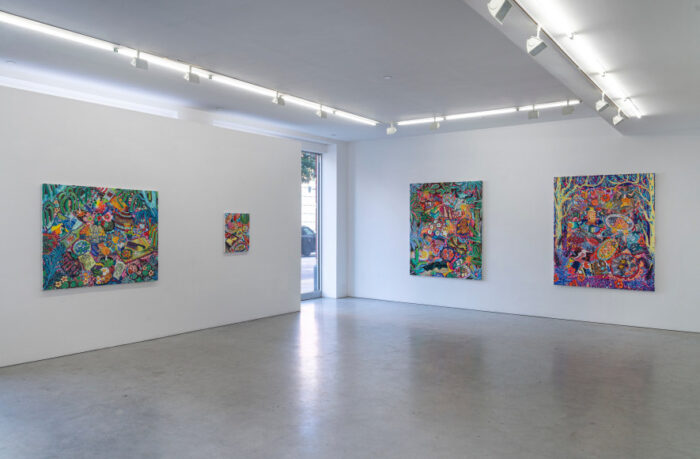
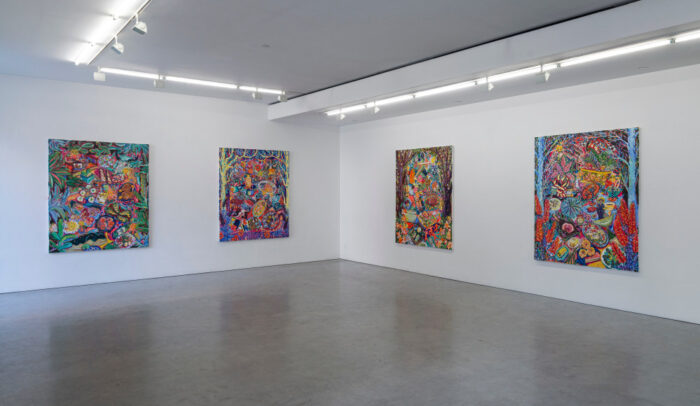
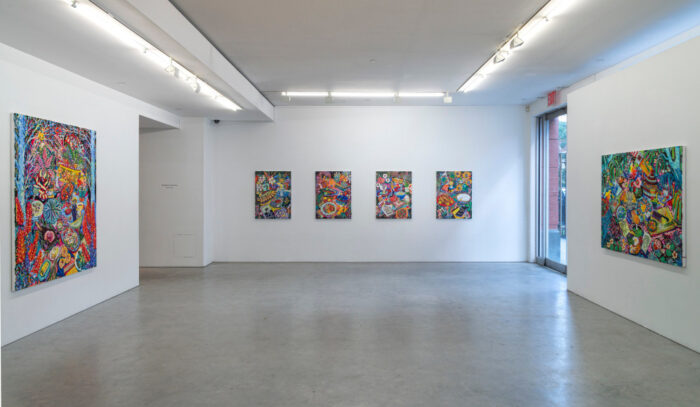
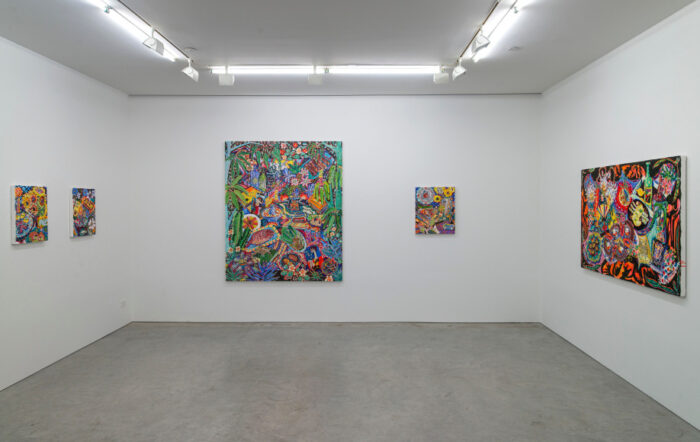
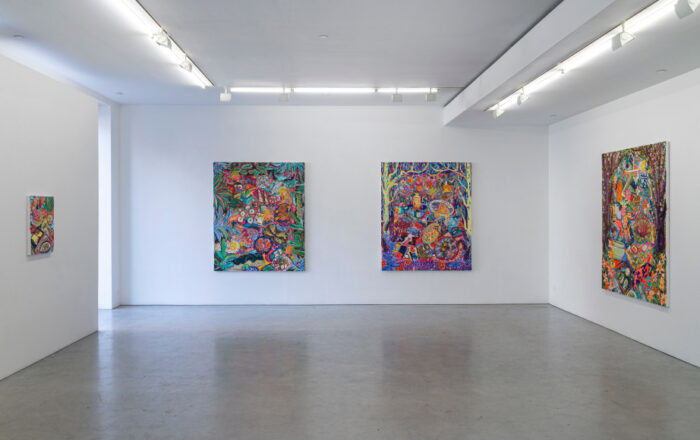
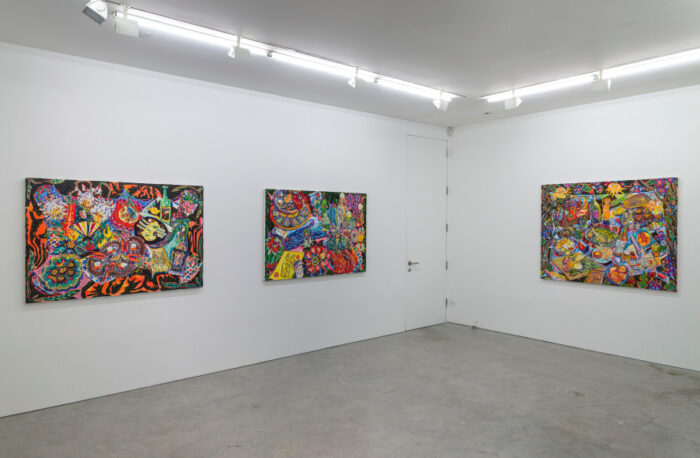
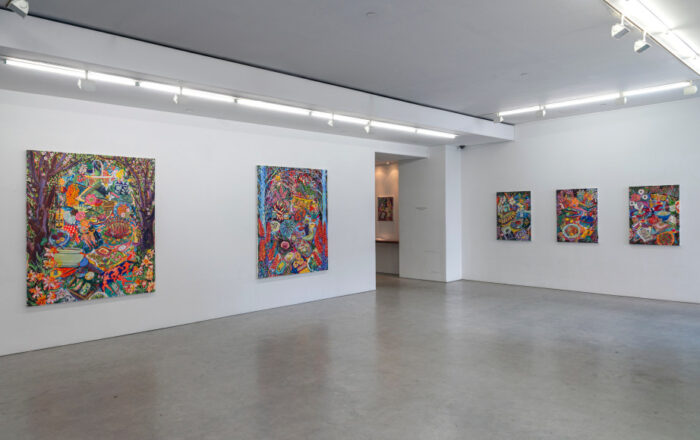
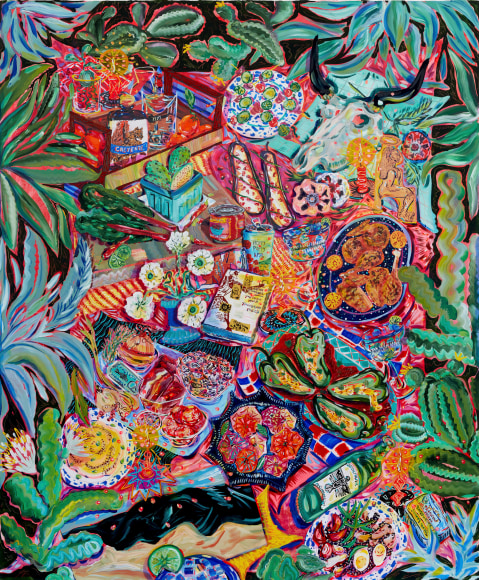
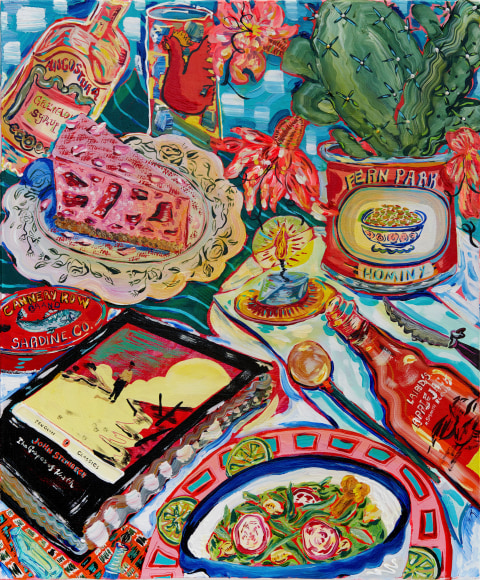
Fredericks & Freiser is pleased to announce The Gods are in the Kitchen, an exhibition of new paintings by Kate Pincus-Whitney. For the artist’s second solo exhibition with the Gallery, Pincus-Whitney continues her investigations into the social landscape of the communal table. The artist’s works are generous in their proposition. Endowed with a bird’s eye perspective, the viewer is presented with boisterously appointed tables that conjure memories of gathering and consumption. Pincus-Whitney’s compositions are sacred rites, much like contemporary Eleusinian Mysteries—viewers are given the tools to achieve clarity and meaning in individuated experiences that will always be opaque to others.
From food and drink to flora and books, the artist’s vibrant objects invite the viewers into their ritual space. Teeming with these objects whose transmutability allows them to function as signs and symbols, Pincus-Whitney’s allegorical compositions are at once hermeneutic diagrams and Jungian sandplay wherein the audience becomes totally immersed amongst myriad referents. These referents are subsequently pulled together and cast aside in narrative permutations depending on individual experiences. The things that populate the canvases bubble to the surface in a cosmic mush like words demanding to be cohered into a poem.
A voracious scavenger and sorcerer of icons and meaning, Pincus-Whitney nods towards art historical genres while evading confinement by their regulations. Harnessing the logics of the still life, the artist’s dazzling tablescapes are imbued with the intimacy of portraiture and the sociopolitical possibilities of history painting. Yet, much of Pincus-Whitney’s world exists beyond art history as she regularly considers literature, psychology, botany, and mythology. References to Joan Didion, bell hooks, William Blake, and Maya Angelou exist alongside Victorian floriography and, of course, a cornucopia of food. One painting is an ode to the historiography of apples: set within a clearing in a forest like Manet’s Le déjeuner sur l’herbe (1863), the composition evokes sources as variable as the Biblical story of Adam and Eve and Mary Cassatt’s depictions of the fruit, to questions of science, desire, and forbidden knowledge—the artist reminds her viewers that an apple is never just an apple. The artist calls this as an “ineffable wiggle magic” which allows the audience to create various constellations of referents and references upon each approach.
Taken as a whole, The Gods are in the Kitchen is a shapeshifting gestalt. Always invested in the duality of the sacred and the profane, Pincus-Whitney sets her tables for her audience to critically explore interpretation and association, or simply, how we make meaning in the world.


